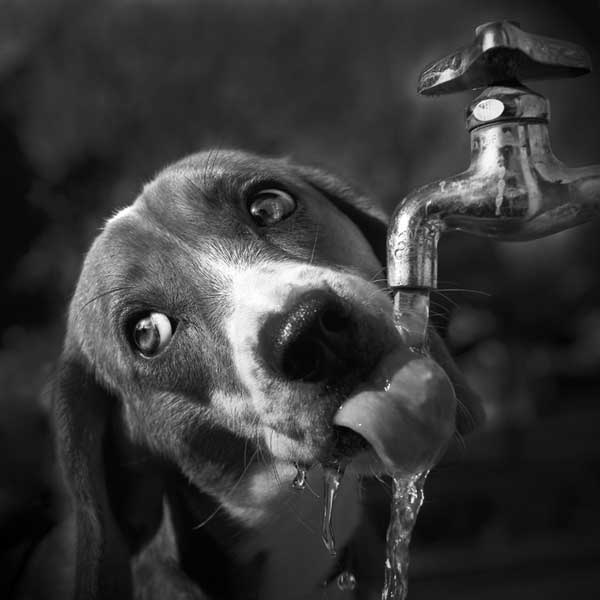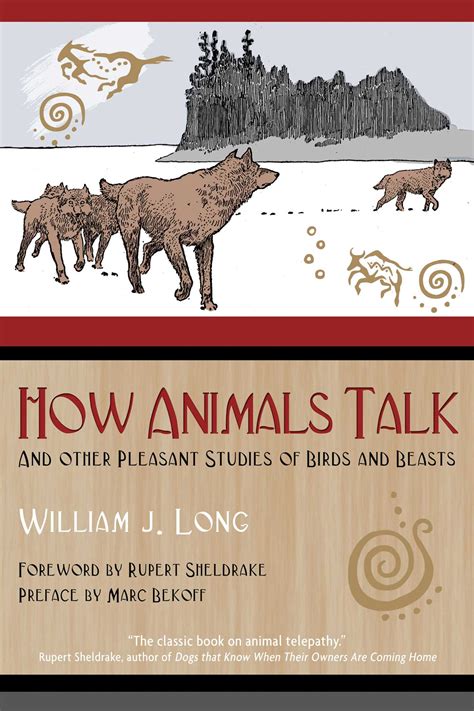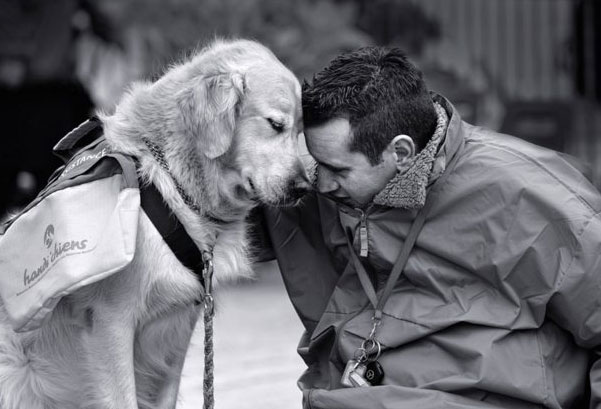Update: 21 December 2024
Canine Care & Feeding
Most degeneration our dogs suffer, diseases and even deaths, are due to biologically incorrect diets the overuse of vaccinations and pharmaceuticals and increasing environmental toxicity.
Contents
- Dogs are Carnivores
- What Not to Feed a Dog
- Commercial Pet Food
- Commercial Pet Food Toxicity
- How Should I Feed My Dog?
- Drinking Water
- Relationship & Training
- Nutritional Supplements
- hTMA (multipurpose medical screen)
- Giving the Best Care
Dogs are Carnivores
Your dog's mouth is an evolutionary work of bioengineering excellence. The jaws are hinged and powerful. This design is specific to allow for effective tearing raw meat and crushing bones. A canine's stomach is highly acidic and their saliva lacks amylase. The high acidity facilitates the break down of raw meat, bones, and bacteria. The lack of amylase makes carbohydrate, cellulose and fiber break down and digestion very difficult.

Your dog is engineered to eat a carnivorous diet.
A canine is a carnivore. They require muscle meat, organ meat, bone and fat in their diet, daily. For most adult dogs two meals are sufficient. Two meals containing raw muscle and organ meat and ground bone are adequate to keep you dog a healthy and happy. Ridiculously happy!
Caution Be aware that some types of bones are unsafe for your dog. And most dogs can be enthusiastic eaters, so bone-in meals may pose a risk if they swallow something that's too big. Play it safe and provide a quality ground raw bone product instead. There are good raw feeding suppliers that offer ground meats/organ meats/and ground bone in their mixes. Here is an example:
- Raw Delivery MN — Quality (and affordable) raw food products and treats for your dog.
The most effective way to limit exposure to many environmental poisons and toxins is to make sure that the animal products used in your dog's food are safe. An excellent way to do this is by local sourcing and knowing your meat producer's practices.
Some raw feeding advocates recommend adding vegetables to a canine's diet. Dogs do best on a starch-free, carnivore-type diet. Vegetables provide a multitude of essential vitamins, minerals and roughage for nourishment. Some animals (i.e., ruminants and termites) digest cellulose with the help of symbiotic micro-organisms that live in their guts. Humans also can digest cellulose to some extent, however it mainly acts as a hydrophilic bulking agent for feces and is often referred to as ‘dietary fiber.’
Canines are not designed to eat roughage and carbohydrates. Plant cellulose (fiber) is very difficult to break down without powerful digestive enzymes, like amylase in saliva, which canines lack. Instead, canines salivate to provide a functional waterside for large chunks of flesh and bone to ride into the stomach where they are dissolved for digestion.
The challenge of dissolving plant cellulose without a digestion designed to do so can easily cause pH imbalances in a dog's stomach, leading to the raw muscle and organ meat sitting in the stomach and small intestine for too long. This causes many problems, from toxicity to digestive enzyme and pH imbalances. Carbohydrates also slow a dog's digestive process.
So if you do have vegetables (plant cellulose) or carbohydrates in your canine's diet, they should be cooked until soft and easily mashed so they can pass through their digestive system more easily.
A raw bone is recommended for oral hygiene (or teething puppies). But be sure that the bone is raw, because cooked bones splinter and crack into sharp pieces and can cause serious harm. Also be sure that the bone is too large to swallow as dog's are know to swallow large pieces of food and a large bone could lodge in their throat. Large marrow-filled bones such as leg bones from pasture raised animals are ideal.
TopWhat Not to Feed a Dog
Canine health is compromised by commercially processed dog foods which contain grains such as corn, wheat and soy, processed meats and chemical additives and preservatives. Eating grain-based food will make most dogs sick, inflamed and obese. When fed correctly, dogs are sleek and slim.
Dog food manufacturers frequently substitute animal protein with protein from grains or vegetables. These proteins are not equal and dogs require meat-based protein. Unfortunately the industrial-level processing used for meat protein destroys much of the available nutrition. Even worse, most commercial foods are laced with preservatives to maintain their long shelf life. Common commercial preservatives in dog foods are BHA, BHT, ethoxyquin, propylene glycol and potassium sorbate. These chemicals contribute to carcinogenicity or tumorigenicity (cancer and tumors).
The pet food industry is part of the human food and agriculture industry — the tail end to be exact. Ingredients otherwise unfit for human consumption are commonly used. In fact, pet food is an excellent way to yield profits from what would otherwise be discarded slaughterhouse offal including; heads, hooves, fetuses and udders, as well as diseased and cancerous animal parts and 4D meat (dead, dying, diseased, disabled).
TopCommercial Pet Food
Most commercially produced dry and wet dog foods are inappropriately formulated and use cooked or processed meat. Cooking and processing meat damages the fats and enzymes, as well as many essential nutrients dogs require in their diet. Additionally, most commercial dog food is made with some form of carbohydrate filler, typically a grain. Grains are not a natural food for dogs to consume. Common grains used include corn, wheat, soy and rice. Dogs cannot digest corn. Wheat, soy and rice are common allergens to dogs and frequently cause inflammation, bloating and skin allergies.
Feeding a dog grains compromises their immune system, causing dysfunction over time. Add to this the long list of chemical preservatives, chemical fertilizers, pesticides, herbicide and fungicide residues, and heavy metals particulates from processing machinery. It becomes clear why dogs are suffering from an array of illnesses such as diabetes, skin problems, behavior problems, blindness and various forms of cancer. This can help explain why cancer is now the leading cause of death in dogs over two years of age.
TopCommercial Pet Food Toxicity
The following commercial dog food additives are classified "Generally Recognized As Safe." (G.R.A.S.)
Chemical Additives
- Anticaking agents
- Antigelling agents
- Antimicrobial agents
- Antioxidants
- Color additives
- Condiments
- Curing agents
- Drying agents
- Emulsifiers
- Essential oils
- Flavor enhancers
- Flavoring agents
- Grinding agents
- Humectants
- Leavening agents
- Lubricants
- Palatants
- Pelleting agents and binders
- Petroleum derivatives
- pH control agents
- Preservatives
- Seasonings
- Spices
- Stabilizers
- Sweeteners
- Texturizers
- Thickeners
There are a wide range of common health problems associated with most commercial dog food.
Health Problems
- Cancer
- Heart disease
- Obesity
- Bloat
- Hyperthyroidism
- Urinary tract disease
- Kidney disease
- Dental disease
- Chronic digestive problems
- And the list goes on, and on ...
How Should I Feed My Dog?
To feed a dog properly is not complicated. Provide a high quality, non-toxic diet that is appropriate for carnivores. Feeding frequency should be twice daily; once in the morning, and once in the evening.

Be consistent, feed your dog the same amount of food each day.
Proportion Guidelines
Feed your dog approximately the same amount and weight of food each day. If the dog is too thin, feed more, if overweight, feed less (and exercise more).
- Feeding a normal active dog (about 45 minutes to one hour of walking, playing, running per day) should be fed about 2% to 3% of their body weight per day in two portions. A 25 pound dog will likely do very well on ½ pound of food per day, a 50 pound dog, 1 pound of food per day, a 100 pound dog, 2 pounds of food per day.
- Feeding a highly active dog (two+ hours of walking, playing, running per day) will likely require 3% to 4% of their body weight per day (or more depending on how much and how strenuous the activity). A 25 pound dog will likely do very well on ¾ of a pound of food per day, a 50 pound dog, 1-½ pounds of food per day, a 100 pound dog, 3 pounds of food per day.
- If your dog is overweight, these percentages will vary, and by vary, we mean you will feed them less (and get more movement into their life, everyday). We frequently see dogs who appear overweight, but are actually simply bloated from the inflammation caused by eating a dry food kibble diet. Often, these dogs will "loose weight" rapidly once they start a species appropriate diet because the excess weight is mostly fluids.
- Puppies need more food for healthy growth. Start off feeding 10% of its current weight, meaning if a puppy weighs ten pounds, feed one pound per day. If the puppy is a large breed dog, if may need more than 10% of its weight. Once the puppy reaches about 3% of its adult body weight, reduce the amount down to 2-4% for normal feeding. You will only be feeding 10% for a little while. It is better to split this amount into several smaller meals since this will be a lot of food for a growing puppy. Remember, this is just a guideline and every dog is different.
Metabolically speaking, each dog has a unique profile (health status, performance requirements, environmental factors, etc.). Feeding proportions can vary for a variety of reasons, and toxic status can impact food intake needs also. hTMA provides an effective way to find out precisely what your dog needs to maintain health.
TopDrinking Water
Dogs need high quality drinking water. A dog fed a species appropriate raw diet may drink less water because much of the hydration they require is present within the food. But they still need water, especially in hot weather or when exercising. Most municipal tap water, and most well water contains many toxic chemicals and heavy-metals.
Tap water is fine if you know it's safe. If it's not, the best option is natural spring water, followed by carbon-filtered water. Distilled and reverse osmosis water is generally free of toxins, but also has the minerals removed so it will draw nutrient minerals from the bones, organs and and tissues of the body. It is not recommended for use as regular drinking water.

Avoid giving your dog processed water products, including; specialty waters with added vitamins, energized water, de-mineralized (i.e., distilled) and alkaline water. All of these types of water can be harmful to your dog's health.
TopRelationship & Training
Your relationship together is a lifelong bond. She is a very special person with a long-established genetic history of interspecies cooperation with humans. And a member of the family (Family First).
You can ensure that your connection is amazing. Cultivate mutual trust, loyalty, respect and love. Establish clear two-way communication to leverage this ancient partnership into gratitude for each moment of your days together. This is your chance to enjoy the opportunity of a lifetime.
Each meaningful relationship you have took time to develop. Lots of time. Knowledge, intent and commitment is crucial. Establishing a direct line of communication and mutual understanding avoids wasted time with ongoing, futile efforts (usually ending with shared frustration and disappointment). Invest your time wisely — reap cascading rewards.

Coco (our rescue) inspired us to get serious about training. We volunteered to foster her for our local Chequamegon Humane Association. She was pregnant. At that moment, what we did not know that she would give birth to 13 beautiful puppies. SURPRISE!
Coco was just two years old, according to our vet she had had ‘at least’ two previous litters. Tragically, Coco came to us burdended with a traumatic history which lead to difficult reactive behavior (heartbreaking).
In a desperate but determined quest to rid her of her demons, we watched dozens of canine-trainers on YouTube and burned through piles of dog training books. Bits and pieces seemed to work, intermittently, but the struggle with Coco's trauma was ongoing and daily. We have since learned that her breed, a hound-mix, also introduces additional — complications. Oh yes, we kept one of the pups too. Mocha is at least ½ Treeing Walker Coonhound. Also with super-scent abilities also. If you are familiar with scent hound characteristics, you know well that they are overwhelmingly distracted by it. Squirrel!
Coco sees the world with her amazing and impressive scent-ability above everything else.
Willian J. Long authored the wonderful, How Animals Talk. It pointed us in a new direction so different from YouTube trainers, and the endless how-to books we had been researching. It's a soothing and magical biographical story. You learn how to better understand animal behavior and how they interact with the environment. It brought our shared relationship to a whole new level of goodness. I think when you begin appreciate Natures matriarchal benevolence, her intricate and complex system of interconnectedness and crucial systemic-cooperation between all life — your relationship with your dog-pal morphs into a world of shared experience, mutual respect, undestanding, and LOVE. Especially Love. It can happen almost instantaniously. IF, you are willing to try and reorient your relationship away from the prevalent master/servant paradigm.
We live together in an egalitarian-partnership. A real family. Each individual member contributes to creating a mutually beneficial daily life experience by providing respect and service to one another. Humans provide a safe home with ample drool-worthy food, Canine-unit provides selfless protection service and the best intruder-alert warning system with perimeter surveillance. There's more, in the spirit of pure hound-dog goofiness, we undergo exausting core strengthening exercises, daily (i.e., irrepressible LOL to the point of crying).
About once a month we cook up a cauldron of ‘dog food.’ The dogs go bonkers for this ultra-healty combo. Envision enjoying a couple of silly puppies merrily pirouetting as they anticipate each meal. For the ingredients, we grow all of our family's nutrient-dense vegetables for the year, and add locally-sourced protein; pastured eggs, meats, organs, as well as some organic grains.
Lifestyle Suggestions
Collars and leashes. Used improperly restraints can cause serious damage. Avoidable harm. Please, never-ever use any "choke" chains, or any type of electric shock device. There are safe and more effective harness and restraint options. We encourage you to consider a better, safer approach.
You may already have discovered that the most common complaint the training industry focuses on is pulling, second only to aggression. Canine resistance flys in the face of dominance and control. But from a canineg point-of-view forced restraint unexpectedly puts them in an openly vulnerable, non-defendable position. "I thought that you loved me, why are you doing this to me? I'm scared, it's not safe!" Natures law, inter-species cooperation, provides an alternative approach. Having youa dog on-leash is the resonable, responsible way to talk for a walk together - for mutual pleasure, not some obligation you're forced to endure. If a problem does occurs you can better protect your dog. Think about how you could make the experience a happy reward for both of you. Be creative, experiment, have fun developing this new way.
Example: First, we like to give each pup a small healthy treat that we know they already love. The perennial favorite is organic popcorn made with coconut oil andf sea salt.. We like it too once and a while, plus it's quick and easy to make, we control the quality ingredients, and its affordable. We are lucky also to have a local source for another fave, Raceys Tasty Dog Treats.com, Pumpkin & Apple are the one's we use, they have the healthiest ingredients.
Be well-prepared for your exciting new adventure. Bring along supplies you may need to ensure it's positive. If its a long walk bring drinking water, weather appropriate clothing, and don't forget the treats! To your dog this is a serious important mission. This is what she does, allow her to control her own actions and explore leisurely. Your job is to better understand who she is, observe and learn. It's a fantasic and interesting way build a resiliant foundation. And if there is already an established pattern of trying to control her pulling – let it go. It's time to really pay attention to your own thoughts and feeliongs, reactions. Because introspective objectivity has many benefits. They will no doubt pull like usual at first. But if you do not try to restrict (unless it's an emergency, of course) then something new and wonderful begins to evolve. They LEARN too, because if they pull too much, they defeat their own desire to investigate and thwart the mission. If you get a sudden unplesant jerk when you reach the end of a leash (tip: use a retractable leash) it's no fun. We like fun! Remember, she is is very intelligent, let her figure out - with you - exactly how to make your walk the best part of the day (outside of meals).
Learning how to repeat what you think is a really good experience is easy. It hgappens automatically, its natural. Take dog treats, for example. That pre-walk hors d'oeuvre will be commited to an instant recall memory, instantly.
Movement. Every animal needs to move, frequently. Dogs need a good place to run around, dig in the dirt, chase small critters, and play the games they love. Dogs need these activities to keep their bodies strong and agile and their minds sharp and alert. If they do not get proper activity, they will get tired and bored easily. The amount of activity needed varies between breeds and individual situations, but at least an hour of playtime outside, walking, chasing, fetching, swimming, daily should keep their minds and muscles working properly.
Sleep. Sleeping is the physiological state when the most effective healing is accomplished (just like in humans). So it's excellent that dogs like to sleep, a lot (especially if there is nothing going on). This is a completely normal behavior. Of course, they will sleep fewer hours outdoors as there are constant stimulating and exciting smells, sounds and movements to get involved with and investigate. It is important to note here that you must provide shelter for your dog from the elements (cold, sun, rain, wind, snow, etc.). If they are left outdoors year round they must have a nice dry doghouse and ample shade and shelter from sun, snow, rain, cold and heat. Canines and humans have a lot in common when it comes to sleep disorders.
TopNutritional Supplements
Feeding your dog a species-appropriate diet does not eliminate the toxins that are present in the body. Today, even a good diet does not provide what's necessary for optimal health and protection against toxic exposures. Most dogs also require nutritional supplements. The specific supplements vary for each animal.
All vitamins and minerals have stimulating or sedative effects and exhibit synergistic and antagonistic effects upon one another. An animal's specific needs are very difficult to identify using guesswork, and giving supplements in this way can do more harm than good.
Digestive enzymes are necessary for proper digestion and utilization of the food a dog eats. If a dog is fed a raw diet, the vitamins, minerals and digestive enzymes necessary are naturally present in the meat and bone. In contrast, with a cooked or commercial diet, these vitamins, minerals and enzymes are destroyed through the high temperatures necessary to cook or process meat. So a dog on a cooked or commercial diet will face imbalances depending on which vitamins, minerals and enzymes survived the processing procedure. A compromised digestion is unable to effectively absorb and metabolize nutrients even when they are present in the food. Knowing what nutrient minerals are lacking is critical for proper supplementation and correction of mineral balances.
It is important to assess the dog's digestive state before switching from commercial food to home prepared food. Because a compromised digestion can have difficulty at first and may require more gentle, gradual changes to their diet. Supplementation and diet recommendations vary with each individual animal and will be determined by your clinician based on your dog's hTMA screening results, their specific performance needs, environmental factors and dietary intake.
TophTMA (multipurpose medical screen)
Most dogs require individual dietary attention and supplementation to reach optimal cellular energy production and immune system function. The ability to properly produce energy, along with the benefit of a fully functioning immune system, allows the animal to not only manage stress, but also to improve their physical and emotional health. This optimization leads to higher levels of functional or working performance. hTMA is an effective method for evaluating your dog's biochemistry (metabolic type), toxic body-burden, and frustrating, otherwise difficult, or impossible to diagnose symptoms. Toxicity and mineral imbalances lead to illness and behavioral issues. A serum blood screen has limitations in identifying chronic toxic metal exposure, whereas hair is used as a tissue of choice by the Environmental Protection Agency. hTMA screening can identify both toxic and nutrient mineral imbalances.
Canine hTMA is an comprehensive health assessment tool and toxicological screen. Environmental toxins, the overuse of immunizations and pharmaceutical drugs have burdened our dogs with unmanageable levels of toxins. The hTMA lab test identifies these issues, and helps in directing the practitioner to corrective diet and supplement recommendations. The hTMA report sheds light on immune function and your dog's ability to respond to multiple stressors.

Giving the Best Care
Providing the best care for your dog is not complicated, feed real food (species, size, and activity appropriate). Go outside and play with your dog every day! It's wonderfully easy to return the unconditional love that your dog gives to you. When you give a hug — you get a hug.
Top